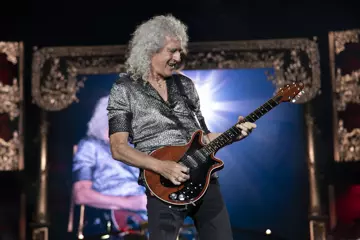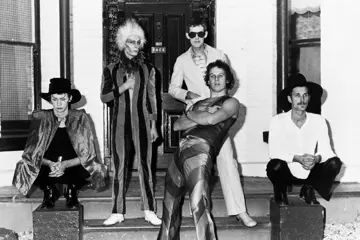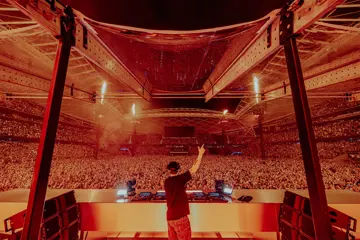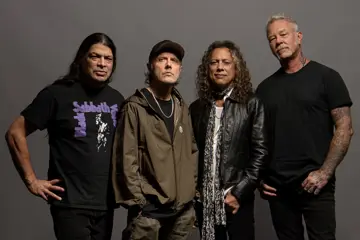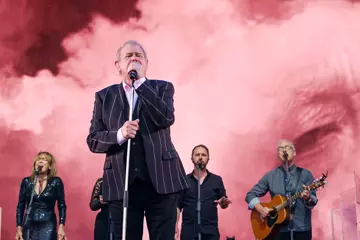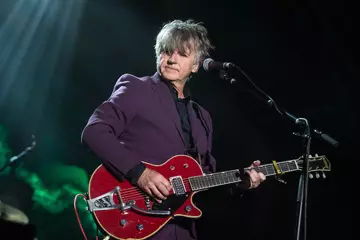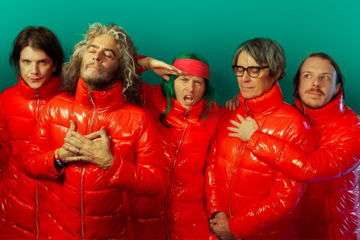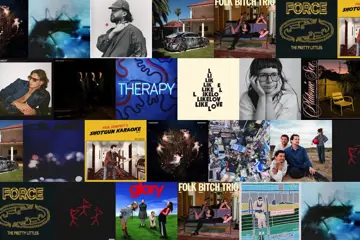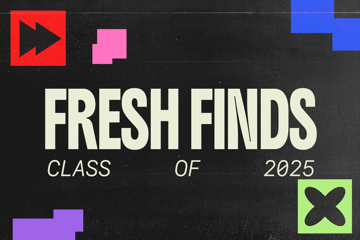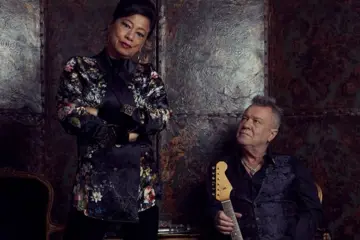rogue one: a star wars story

Disclaimer: SPOILER ALERT… you have been warned!
When Gareth Edwards was announced as the first director of a Star Wars Anthology movie, the filmmaker —fresh off the triumph of Godzilla— pronounced that he was making a war-movie; names like Black Hawk Down, Saving Private Ryan, and Apocalypse Now bandied around. The plot premise was spun from a footnote in the narrative of the original Star Wars, dramatising the Rebel mission that purloined the plans for the Death Star, which exposed the hulking monolith’s single design flaw. This simple set-up made Rogue One ripe for scaled-down, B-movie treatment: as military-op heist, taking place in a corner of a galaxy far, far away.
Yet, Rogue One delivers not on that promise. There’s nothing scaled-down or more-focused about it. Instead, it’s a war movie depicting a war involving endless species across countless planets, laser-fire, imperial walkers, space-ship dogfights, comic-relief robots with posh English accents, absent fathers who die in the arms of their child on vertiginous walkways, and ultra-villains who (think they?) can choke people across the room.
As this war-movie recon dances with out-and-out retconnery, Darth Vader makes an appearance, replete with booming James Earl Jones voice; introduced via a looming shadow and the foreboding notes of his standard musical motif. Only, after seeing the glories of a villain brought to screen by Adam Driver — an on-the-edge actor who can make the phrase "I'm about to eat nachos" one of the greatest line-readings in cinema history — now this one-time figure of ultimate evil looks utterly camp; a veritable Dark Helmet swanning about a panto stage.
Don't miss a beat with our FREE daily newsletter
If that’s not enough OG-revivalism for you there’s CGI’d Grand Moff Tarkin and Princess Leia awaiting; this behind-enemy-lines war-movie not just heading deep into your childhood, but into the Uncanny Valley. Peter Cushing being digitally resurrected feels like grand symbol of Rogue One, a movie that, contrary to its pre-release hype-making, is overly concerned with bringing back the past. After J.J. Abrams’ The Force Awakens found exultant praise for banishing the memories of the George Lucas prequels to some distant digital-back-lot of the mind, Rogue One, with its eerie digital approximations of old actors, feels closer to them.
Coming sandwiched in between Revenge Of The Sith and A New Hope, Rogue One is a glorified exercise in gap-filling. With its panoply of references to long-etched Star Wars lore, the screenplay — written by Chris Weitz and Tony Gilory, a curious union of American Pie and Bourne — seems hemmed in, reduced to the functionality of bridge-building. The free-wheeling feeling of The Force Awakens is lost. The task of Edwards, instead, is to spin a self-contained story within the tangled, labyrinthine lay-out of canon; fan-service, as always, the greatest of modern-day blockbuster burdens.
So, Rogue One is the opposite of contained side-story, filled not just with elaborate references and Star-Wars-celebrity cameos, but a heapin’ helpin’ o’ the series’ favourite tropes.
Felicity Jones plays the child from a far-flung planet fatefully drawn into the Empire/Rebel conflict, who harbours daddy-issues with pops Mads Mikkelsen, a scientist kidnapped long ago to work on building the Death Star. She’s drawn into a love/hate relationship with a dashing, charismatic mercenary, Diego Luna, who travels with a comic-relief robot. They soon end up in a troop of rag-tag misfits —twitchy, squirrely, eyeball-buggin’ Riz Ahmed, who looks like he’s wandered in from Mad Max; Zatoichi-esque blind warrior/would-be-Jedi Donnie Yen; gruff weapons-man Jiang Wen— who’ll band together to pull off a veritable suicide mission (into a data storage facility!). The villain of the piece is Ben Mendelsohn, all murderous ambition and ultra-long cape, agitating for corporate power against the digital-approximation-of-Peter-Cushing.
Together, this Imperial pair want to get the glory of the Empire’s newfound ability to blow up planets. And, true to the CGI age, this kind of grand, planetary spectacle is where Rogue One succeeds: its army of unknown digital technicians adept at creating worlds, and then destroying them. There’s raw, Icelandic, volcanic vistas; Bamiyan-esque temples etched into Jordanian mountains; and a final shootout staged in the sandy shallows of a tourism-worthy Moldivian tropical atoll. This creation of whole new worlds is the one place where Rogue One feels liberated from its spun-off burden, from the dictums of house style; making for an artful riff on a movie in which ‘the beautiful scenery’ is listed as superlative.
And, when it nukes these worlds, landscape turning over itself in some imaginable Earthquake ripple, Edwards shows the sense of scale he displayed in Godzilla: depicting both people on the ground, thrown into the furnace of apocalypse, and then generals on high, looking down at the silent beauty of an irradiated mushroom cloud like Englishmen watching the cricket.
In these scenes, Rogue One does a better job of displaying the destructive menace of Imperial power than, even, any of the originals: razed planets felt by those on the ground, war fought by the foot-soldiers in the skirmish. But, ultimately, it can’t escape its place within a long-established cinematic world, its place along a pre-existing timeline. Characters and chaos prove only fleeting, soon giving way to a run of winking appearances (Jimmy Smits!), and endless uses of the word ‘hope’.
‘Hope’ is the film’s final word, spoken as lead-in to Episode IV, the send-off for an cinematic endeavour verily built just to hand off that baton. The real hope, though, should be reserved for future Anthology instalments, like Phil Lord and Christopher Miller’s forthcoming Han Solo Origin Movie. Hopefully, they can feel more like their own movies, can be stand-alone films that actually stand alone.

